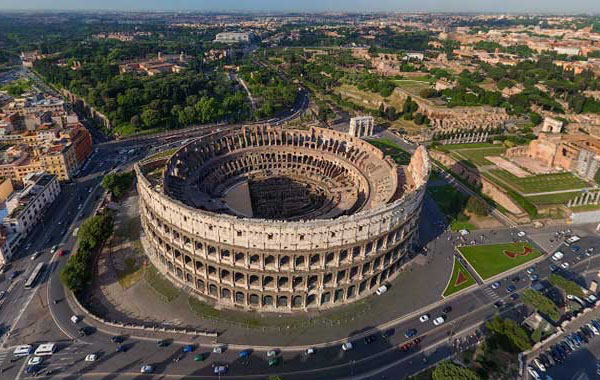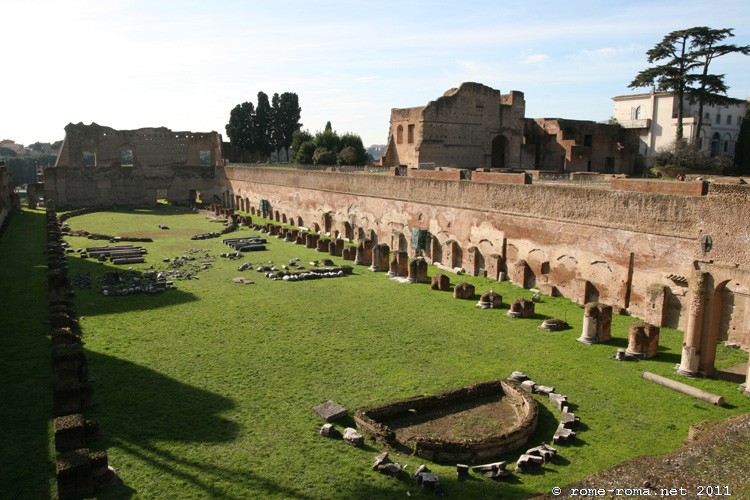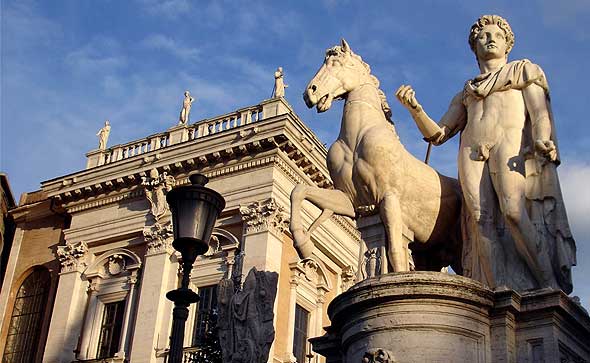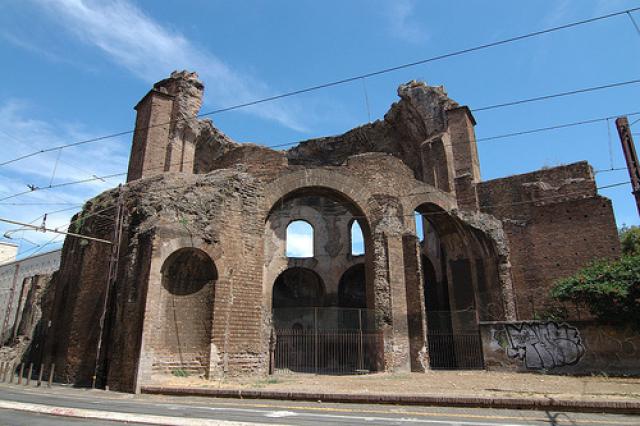
Rome is also revered as the City of seven Hills.
It refers to the group of hills on or about which the ancient city of Rome was built.
The original city of Romulus was built upon Palatine Hill

The Palatine Hill was said to be where Romulus founded the original city of Rome on the site of an older settlement.
During the Republican period, many aristocrats of Rome had luxurious houses here, but by the Imperial period the whole hill was given over to the lavish palace of the emperor. The word “Palace” takes its name from this hill.
These days, the whole hill is an archaeological site, with the ruins of many generations of Rome’s emperors on show.

The other hills are…
Capitoline
The Capitoline Hill was incredibly significant in Roman times, being home to several important buildings, notably the Temple of Jupiter Best and Greatest, the Temple of Juno and the Tabularium (archives), the foundations of which can be seen beneath the Palazzo Senatorio, which is the modern City Hall of Rome.
The hill was also the site of the infamous Tarpeian Rock, from which traitors to ancient Rome were hurled to their deaths.
The focal point of the hill today is the mighty Vittorio Emmanuele Monument and by two imposing staircases.
Esquiline
The Esquiline hill is the area of modern Rome south of the main train station, Termini, and north of the Colosseum.
It’s home to the incredible basilica of Santa Maria Maggiore (one of the four papal churches) as well as several smaller churches and monuments.
Aventine
Divided into the Lesser and the Greater Aventine, this was the area of Rome originally outside the sacred boundary of the city and traditionally associated with the plebs of ancient Rome.
It’s now a leafy residential district with a commanding view of the Palatine Hill.
Quirinal
The Quirinal Hill is dominated by the Palazzo del Quirinale, one of the three official residences of the Italian President.
Caelian
The Caelian hill lies to the south of the Colosseum.
Many monuments are of prominence here, like the Basilica of St John Lateran, one of the four papal churches, and the Baths of Caracalla.
Viminal
This is the area north of the Esquiline, now identified with the sprawling Termini station.
The Baths of Diocletian situated close by, are symbolic of the vast scale of the Roman imperial bath houses.

Thanks to the terrific guide